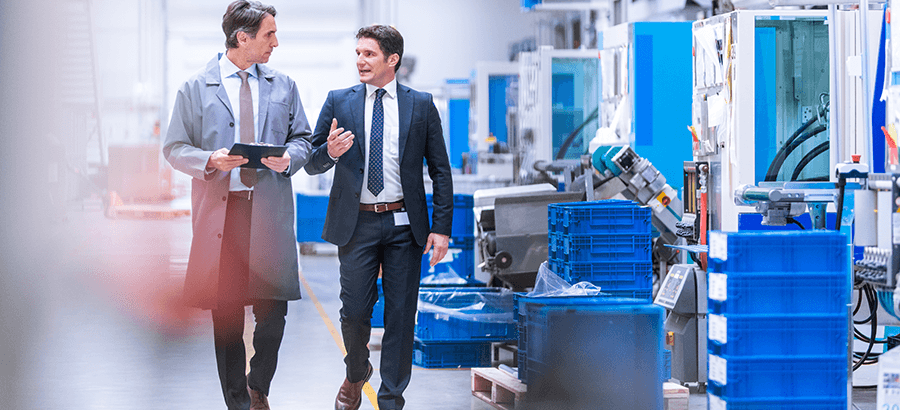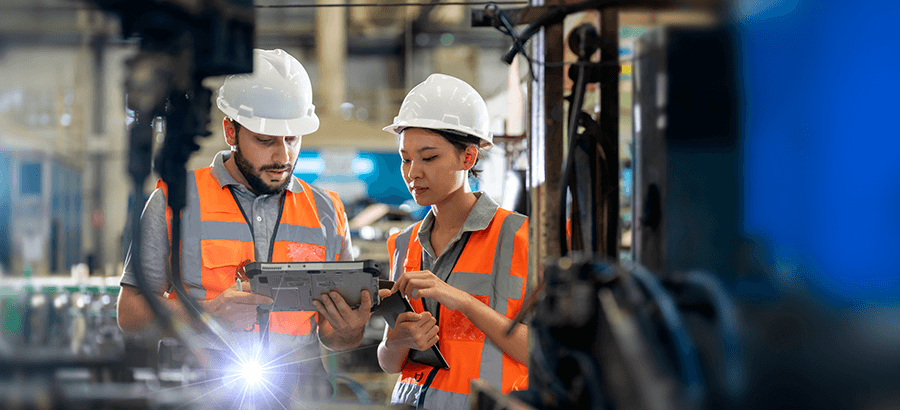Most manufacturing companies are working on what a low carbon future means for their business with the urgency to cut global CO2 emissions in half by 2030 and strive for a net-zero by 2050. We know that the manufacturing industry is the engine of economic growth and social impact. According to The World Economic Forum this sector accounts for 16% global GDP but also is responsible for producing 20% of global CO2 emissions and consuming 54% of the world’s energy. For example, the manufacturing sector in Australia is one of the top three heaviest carbon emitters within the country.
Given the scale of the net-zero challenge it’s imperative for manufacturers to act now to future-proof their business. Net-zero refers to the balance between the amount of greenhouse gas (GHG) emissions produced and the amount removed from the atmosphere. Net-zero will be achieved when the amount added is not more than the amount taken away. This is an important objective as the increasing levels of GHGs, of which carbon emissions is the most common, contribute to climate change. Australia has the highest rate of carbon emissions per capita in the developed world, therefore has huge responsibility to join the global effort. Many of Australia’s major trading partners have announced ambitious climate goals for 2030 and the Australian government is currently committed to reducing emissions by 26-28 per cent by 2030 although there isn’t a confirmed deadline for net-zero.
The pressure to confront climate change
Achieving this environmental mandate presents an opportunity for manufacturers in Australia and beyond to increase their innovation, competitiveness, and resilience. There is also huge pressure from shareholders, governments, and consumers for this sector to decarbonize and with it comes implications for corporate decision making. The Australian government is building a ‘Clean Energy Future’ through a comprehensive plan to dramatically cut pollution, introduce a carbon price and invest billions of dollars in renewable energy. The plan is to also transform the energy sector away from high polluting sources such as brown coal, and store millions of tonnes of carbon in the land through better land management. Through the Emissions Reduction Fund, the Australian government will also provide an incentive to manufacturers to proactively reduce their emissions.
Adopting green policies and initiatives can give you a substantial leg-up. Here’s how manufacturers can transition towards a carbon-neutral future of manufacturing over the next few decades:
Improve supply chain operations
Organizations can take steps to address their operations and how they contribute to these emissions, and this can be done through wins such as making the supply chain more efficient. An example is tracing every product from raw material to finished product to ensure it’s sustainable while reducing wastage.
Evaluate the product life cycle
Manufacturers can make a huge impact in reducing emissions through innovation up front during product development – for instance, through product and packaging design centered around energy efficiency, recycling, and more sustainable materials. In sustainable manufacturing, a view of the whole product cycle is crucial for optimizing manufacturing systems, products, and services. This goes as far as ensuring that the way the end consumer needs to use the product will not strain the environment.
Focus on logistics
The traditional way toward a more sustainable supply chain has been through procurement. Think about where you get your products from and how they will be distributed and how modes of transport contribute to the carbon emissions. Big Data analytics, AI, and machine learning can have a significant impact on supply chain sustainability. Such technology, for example, can help organizations identify the fastest, cheapest, and most sustainable shipping routes.
Sustainability and technology
It is no doubt that technology is an enabler of sustainability. For example, data and digital initiatives like ERP create the necessary visibility and product or service traceability to understand exactly what is happening within the entire supply chain.
ERP is the building block on which much of this advancement towards net-zero will be based, because it can fundamentally assist with achieving better asset efficiency and managing production optimization in innumerable detail to maximize quality and income while minimizing costs. ERP can assist manufacturers become more efficient, reduce their environmental footprint, and most importantly redesign products and their value propositions with the aim of achieving not only sustainability but also resilience for the future.
Investors, governments, regulators, and customers are becoming more focused on sustainability. This is no longer a ‘nice to have’ for manufacturing industries who want to be around for a while as the world’s resources are really under pressure and supply chains, in particular can be singled out for their environmental impact. Planning effectively for tomorrow (or 2050) means taking the necessary steps today. The smarter use of resources can have a big impact on both your bottom line and the health of the planet.








1 thought on “How Australian manufacturers can achieve the net-zero deadline”